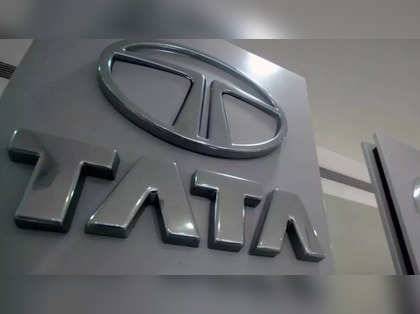 Agencies
AgenciesAn eternal gentleman with a Brooks Brothers fetish, Tata genially nodded. I exactly do not recall his exact response but to paraphrase, he felt it’s unfortunate the markets misunderstood the intrinsic value of the transaction.
Truth be told, till last week, for 15 long years, Tata Steel remained misunderstood by most. Labelled a basket case by even some of its own as home grown peers like JSW edged past; trudged the sharp drop in European demand, a post Lehman washout of the leverage market, Brexit, pension pangs, the ignominy of a sale of an unit for £1; a botched mega merger with Thyssenkrupp; even high handedness by some during the early days of its greenfield project in Kalinganagar didn’t paint a pretty picture.
Annual losses in FY13, 15,16,17 and five years later, a remarkable turnaround last week to emerge as the most profitable company in the entire group, even overtaking the traditional ATM of the cappuccino-to-cars conglomerate, is a testament of its resilient, “fit for future” programme – an obsessive drive to cut flab -- steel making rationalised by more than halve in 16 years across Europe through a series of non-core asset sales to over 20,000 jobs – that has seen over 500 million pounds added to the bottomline, over the last 3 years in the twin hubs of UK and Netherlands. Simultaneously, the focus has been to tweak the product portfolio in high value products whilst maintaining a low cost position.
Steel is a cyclical business, so the company is indeed cherishing the upside of a commodity super cycle but even at its worse, Tata Steel’s European EBITDA margin ranged between 0 to 8% while peers Salzgitter was in similar range of 1 to 6% and SSAB’s and ArcelorMittal’s European business ranged between between 4 to 9%. In the last two years as governments built more roads and houses and office blocks, prospects across the industry have thrived. Tata Steel Europe recorded an EBITDA margin of 14% in FY22, higher than even the 2% posted by Thyssenkrupp (upto September 2021) steel business -- a company it once thought would merge into, or even Arcelor at 15%.
Back home, the company's net debt/Ebitda for FY2021 was about 2.4 times, compared to JSW’s almost 2.6 times. Again, this is the result of shaving off Rs53,000 crore of debt in the last two years.
Such a score puts extra spotlight on the importance to capital and allocation across the $103 billion conglomerate. Tata Sons, the apex decision-making body, has reportedly deployed Rs5,882 crore into Tata Digital -- the highest ever fund allocation in a single tranche, and the most the group has invested into ecommerce in any single fiscal year. This takes the cumulative investment to Rs11,872 crore till 2021-22, to fend off deep-pocket rivals.
In comparison Trent, which operates e-retail Westside, or hypermarket Star Market, look left out, with only a preferential allotment of a paltry Rs950 crore made in August 2019 for a marginal stake hike. At a 149 price-to-earnings (P/E) ratio trailing 12 months, it’s the 2nd most valuable retailer after Vishal MegaMart in the country.
The Tata leadership is convinced capturing consumer data by going digital through a super app is the way to future growth.
But for all the hype, hiring and the headlines, teething problems have rocked the already much delayed launch Neu during this IPL season.. The app is slow, clunky, crashes frequently and the user experiences patchy at best. The challenge is the structure itself – on the back of its string of recent digital acquisitions/investments like Big Basket, 1MG, it offers a bouquet of services, from e-commerce to F&B to airline tickets, health, with a target of a consolidated GMV of $10bn in FY23.
The jury is still out if super apps will work in India the way it did in China or South East Asia. We buy medicines on one app, grocery on another, watch football on another and movies on yet another. As Sachin Salgaonkar, senior analyst of Bank of America rightly says, we also don’t see dominant corporate forces like Alibaba, TaoBao or even Tencent with “capital concentration” in India leading to no one stop powerful apps emerging. That said, many are still at it – from Reliance to Paytm to PhonePe but look closely and the subtle difference will come to light –content, commerce dovetails into the Jio carriage. Payments, chat, social media are high frequency models ala WeChat. By retrofitting all the businesses bought and backed to create an umbrella offering may remain sub par.
How much resources need to be invested in cash flow generating businesses versus future disruptors that offer an immediate valuation pop is a tough choice. Click and mortar should happily coexist.
(Catch all the Business News, Breaking News, Budget 2024 Events and Latest News Updates on The Economic Times.)
Subscribe to The Economic Times Prime and read the ET ePaper online.
Read More News on
(Catch all the Business News, Breaking News, Budget 2024 Events and Latest News Updates on The Economic Times.)
Subscribe to The Economic Times Prime and read the ET ePaper online.










 Get Unlimited Access to The Economic Times
Get Unlimited Access to The Economic Times
